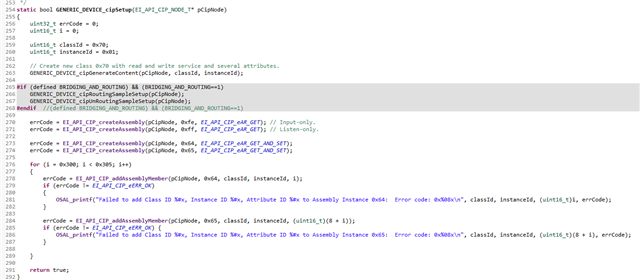Tool/software:
To create a 4-byte counter (e.g., uint32_t) on the LP-AM243 that:
-
Increments on a condition (e.g., button press, timer, signal)
-
Is exposed via EtherNet/IP Input Assembly (e.g., Assembly 101)
-
Stored in memory so CODESYS or Allen-Bradley can read it via EDS
-
Compatible with the EDS parameter / assembly model


